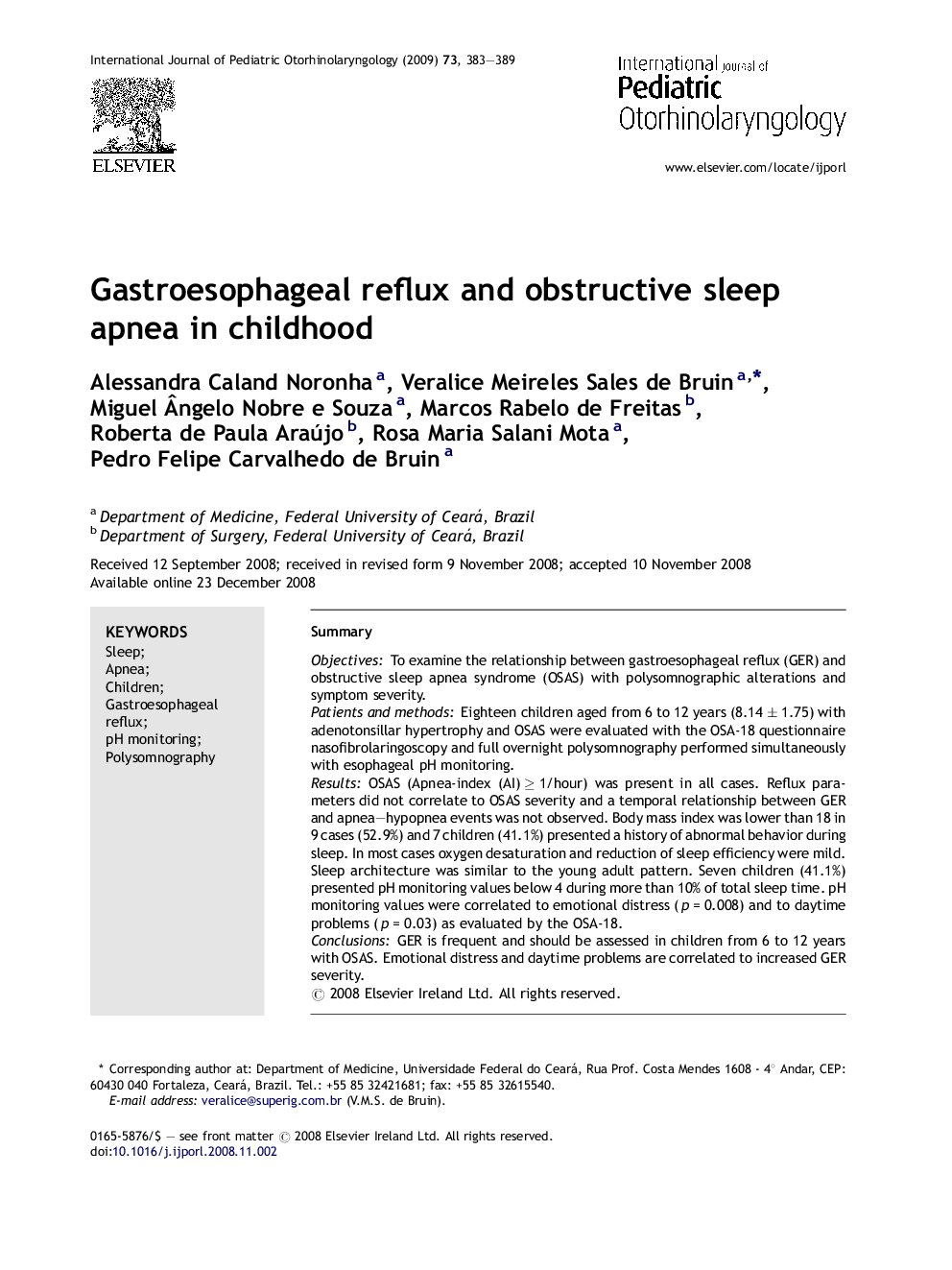| Article ID | Journal | Published Year | Pages | File Type |
|---|---|---|---|---|
| 4114009 | International Journal of Pediatric Otorhinolaryngology | 2009 | 7 Pages |
SummaryObjectivesTo examine the relationship between gastroesophageal reflux (GER) and obstructive sleep apnea syndrome (OSAS) with polysomnographic alterations and symptom severity.Patients and methodsEighteen children aged from 6 to 12 years (8.14 ± 1.75) with adenotonsillar hypertrophy and OSAS were evaluated with the OSA-18 questionnaire nasofibrolaringoscopy and full overnight polysomnography performed simultaneously with esophageal pH monitoring.ResultsOSAS (Apnea-index (AI) ≥ 1/hour) was present in all cases. Reflux parameters did not correlate to OSAS severity and a temporal relationship between GER and apnea–hypopnea events was not observed. Body mass index was lower than 18 in 9 cases (52.9%) and 7 children (41.1%) presented a history of abnormal behavior during sleep. In most cases oxygen desaturation and reduction of sleep efficiency were mild. Sleep architecture was similar to the young adult pattern. Seven children (41.1%) presented pH monitoring values below 4 during more than 10% of total sleep time. pH monitoring values were correlated to emotional distress (p = 0.008) and to daytime problems (p = 0.03) as evaluated by the OSA-18.ConclusionsGER is frequent and should be assessed in children from 6 to 12 years with OSAS. Emotional distress and daytime problems are correlated to increased GER severity.
